I was that kid who would pick out every vegetable from my plate, driving my mom crazy at every meal. But there was one dish that completely changed my relationship with vegetables: Tortang Talong.
This humble eggplant omelette was my gateway to actually enjoying vegetables. And to this day, it remains my ultimate comfort food.
The way the smoky, grilled eggplant melds with the perfectly seasoned egg coating creates something so delicious that you'll forget you're eating vegetables. Even my own kids, who normally run at the sight of anything green, clean their plates when I serve this family favorite.
My Lola used to say that the secret to converting picky eaters is not to disguise vegetables but to transform them into something irresistible, and that's exactly what this classic Tortang Talong recipe does.
Once you master this simple Filipino staple, it'll become your go-to recipe for busy weeknights or whenever you need a satisfying meal that brings back memories of home cooking.
You only need a handful of ingredients to create this beloved dish that's been passing from one generation to another in Filipino kitchens.
Jump to:
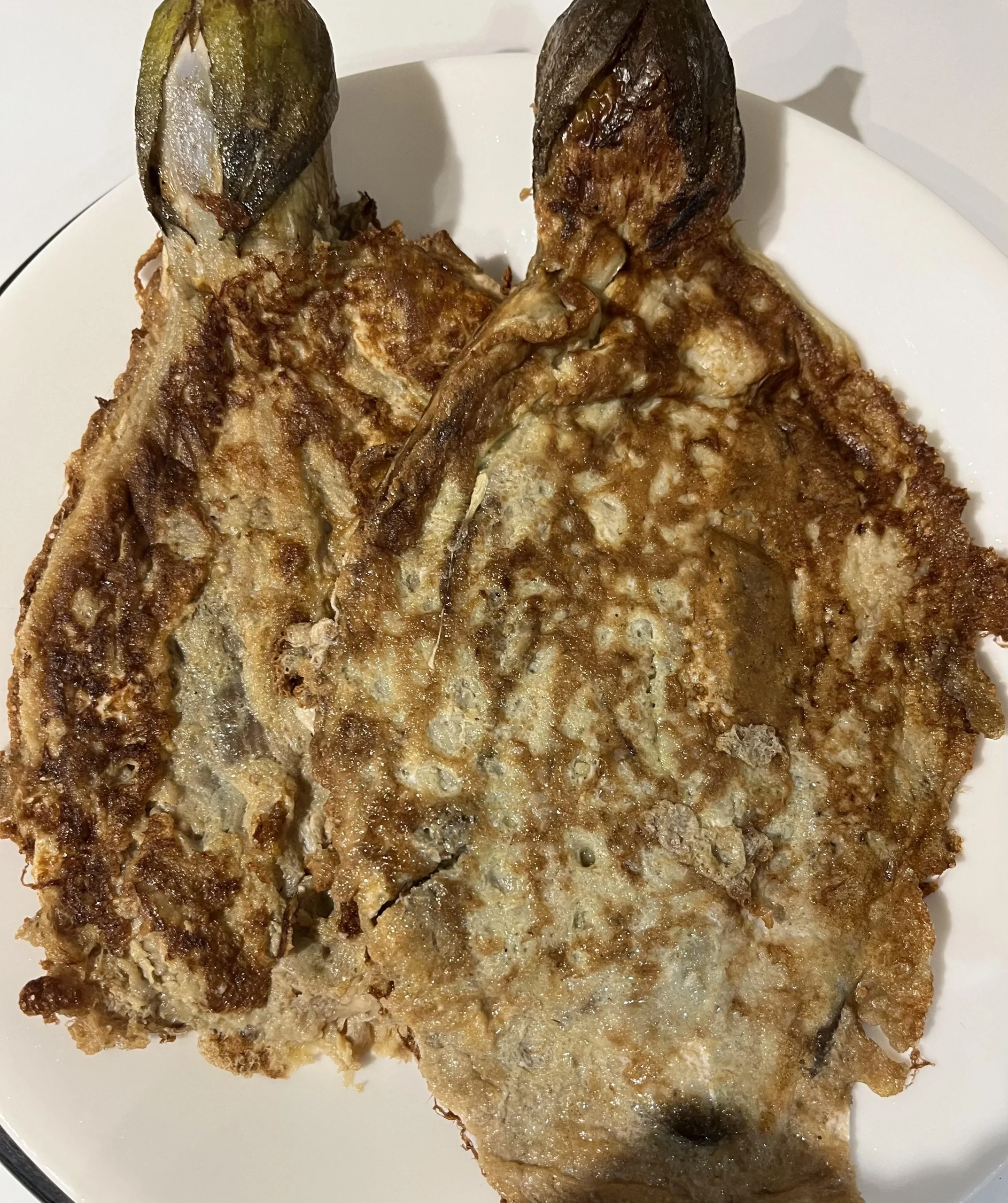
Why You'll Love This Recipe
- Simple, budget-friendly ingredients
- Perfect for busy weeknight dinners
- Naturally gluten-free and vegetarian
- Versatile - can be served for breakfast, lunch, or dinner
- Rich in nutrients from eggplant (vitamins B6, C, K, fiber)
- Authentic Filipino home cooking flavor
- Ready in just 30 minutes
Ingredients
These ingredients create the perfect Tortang Talong through their simple yet powerful combination. Chinese eggplants provide a tender base with mild flavor that absorbs the smoky notes from grilling.
Eggs add protein and create that golden crust while binding everything together. Salt enhances all the flavors without overwhelming them. The cooking oil creates the essential crispy exterior while preventing sticking.
Optional additions like garlic and onions add depth and savoriness to the dish, transforming these humble ingredients into a comforting meal that has stood the test of time in Filipino kitchens.

- 4 Chinese eggplants
- 2 large eggs
- 1 teaspoon salt
- 6 tablespoons cooking oil
Optional Add-ins:
- 1 small onion, finely chopped
- 2 cloves garlic, minced
- Ground black pepper to taste
Equipment
- Grill or stovetop grill pan - For charring the eggplant to develop that essential smoky flavor
- Medium mixing bowl - For beating and seasoning the eggs
- Fork - For gently flattening the eggplant while keeping its structure intact
- Large non-stick skillet - For frying the eggplant to golden perfection
- Spatula - For carefully flipping the delicate omelette
- Paper towels - For draining any excess oil before serving

How To Make
- Wash and dry the Chinese eggplants. Pierce them several times with a fork to prevent bursting during cooking.
- Grill the eggplants over medium-high heat (180-200°C/350-400°F) until the skin is completely charred and the flesh is tender, approximately 8-10 minutes. Turn occasionally for even cooking.
- Let the eggplants cool slightly until comfortable to handle. Carefully peel off the charred skin. Place each peeled eggplant on a flat surface and gently flatten with a fork, keeping the stem intact for support.
- In a bowl, beat eggs until well combined. Add salt and pepper if using. If adding optional ingredients, mix in minced garlic and chopped onions at this stage.
- Heat cooking oil in a large skillet over medium heat (170°C/340°F). Dip each flattened eggplant in the egg mixture, ensuring it's completely coated.
- Carefully transfer to the hot pan and cook for 3-4 minutes until golden brown. Gently flip and cook for another 2-3 minutes on the other side.
- Transfer to paper towels to drain excess oil. Serve hot with steamed rice and your choice of banana ketchup or spiced vinegar.

Tips from Lola's Kitchen
- Select the perfect eggplant: Look for firm, glossy eggplants without blemishes for the best texture and flavor.
- Always pierce before grilling: This essential step prevents the eggplant from exploding during cooking.
- Keep the stem intact: The stem provides structure when flattening and helps maintain the eggplant's shape.
- Don't rush the grilling: Proper charring develops the signature smoky flavor that makes this dish special.
- Pat dry after peeling: Removing excess moisture helps the egg mixture adhere better to the eggplant.
- Maintain medium heat: This ensures thorough cooking without burning the delicate egg coating.
- Use a wide spatula for flipping: This supports the entire omelette when turning to maintain its integrity.
Substitutions
- Eggplant varieties: Japanese eggplants work well as a substitute for Chinese eggplants. If using larger globe eggplants, cut them in half lengthwise before grilling.
- Egg alternatives: For a lighter version, use only egg whites. For a vegan option, substitute with a chickpea flour batter (1 cup chickpea flour mixed with ¾ cup water and seasonings).
- Oil options: Any neutral cooking oil works well - vegetable, canola, or corn oil are excellent choices.
- Protein additions: Add cooked ground pork, flaked tinapa (smoked fish), or chopped shrimp for extra protein.
Troubleshooting
- Breaking eggplant: If your eggplant falls apart, you're likely flattening too aggressively. Use gentler pressure and ensure the stem remains intact for structural support.
- Egg coating slides off: Pat the eggplant thoroughly dry after peeling. Adding a pinch more salt to your egg mixture also helps it adhere better.
- Burning too quickly: Your heat is too high. Lower the temperature and add a little more oil if needed.
- Undercooked center: The eggplant wasn't fully cooked during grilling. Ensure it's completely tender before proceeding to the frying stage.
- Soggy texture: You may have soaked the eggplant in the egg mixture too long. A quick dip is all that's needed.
Storage & Reheating
- Refrigeration: Store in an airtight container for up to 2 days.
- Reheating: For best results, reheat in a skillet over medium heat until warmed through. Avoid microwaving as it makes the texture soggy.
- Make-ahead option: You can grill and peel the eggplants up to 24 hours in advance. Store in the refrigerator and complete the egg coating and frying just before serving.
- Not recommended for freezing: The texture significantly deteriorates when frozen and thawed.

FAQ
Can I make this without a grill?
Yes! Char the eggplant directly over a gas stovetop flame, under the broiler, or on an electric griddle. The key is achieving the smoky, charred flavor.
How do I know when the eggplant is properly grilled?
The skin should be completely charred and blistered, and you should be able to easily pierce the flesh with a fork. The eggplant will feel soft when gently pressed.
What's the best way to serve tortang talong?
Traditionally with steamed rice and either banana ketchup or spiced vinegar. It pairs beautifully with atchara (pickled papaya) or a side of fresh sliced tomatoes.
Can I add cheese to this recipe?
Absolutely! Sprinkle grated cheese (cheddar or kesong puti) over the eggplant after flipping for a delicious cheesy variation.
Why is this dish so popular in Filipino cuisine?
Tortang talong exemplifies Filipino ingenuity in transforming simple ingredients into satisfying meals. It's economical, nutritious, and versatile enough for any meal of the day.
Is tortang talong healthy?
Yes - eggplants are rich in fiber, vitamins B6, C, K, and antioxidants. For a healthier version, use less oil by cooking in a non-stick pan or try air-frying.
How spicy is this dish?
The traditional version isn't spicy, but you can easily add chopped chilies to the egg mixture or serve with a spicy dipping sauce for heat.
What makes the perfect tortang talong texture?
The ideal texture features a tender, smoky eggplant center with a light, golden-brown egg coating that's just crisp enough on the outside.
Related
Looking for other recipes like this? Try these:

Tortang Talong (Filipino Eggplant Omelette)
Equipment
- Grill or stovetop grill pan (para sa pag-grill ng talong / for grilling eggplant)
- Medium mixing bowl (para sa beating ng itlog / for beating eggs)
- Fork (panglamas ng talong / for flattening eggplant)
- Large non-stick skillet or frying pan (kawali / for frying)
- Spatula (panghalin / for flipping)
- Paper towels (for draining excess oil)
Ingredients
- 4 Chinese eggplants talong na mahaba
- 2 large eggs itlog
- 1 teaspoon salt asin
- 6 tablespoons cooking oil mantika
Optional Add-ins:
- 1 small onion finely chopped (sibuyas)
- 2 cloves garlic minced (bawang)
- Ground black pepper paminta
Instructions
- Begin by washing and drying the Chinese eggplants. Grill the eggplants over medium-high heat (180-200°C/350-400°F) until the skin is charred and flesh is tender, approximately 8-10 minutes, turning occasionally for even cooking. Pierce the eggplants before grilling (butasin ang talong) to prevent them from bursting.
- Once grilled, let the eggplants cool slightly until comfortable to handle. Carefully peel off the charred skin (balatan ang talong). Place each peeled eggplant on a flat surface and gently flatten with a fork, keeping the stem intact for support.
- In a bowl, beat eggs (itlog) until well combined. Add salt (asin) and pepper (paminta) if using. If adding optional ingredients, mix in minced garlic (bawang) and chopped onions (sibuyas) at this stage.
- Heat cooking oil (mantika) in a large skillet over medium heat (170°C/340°F). Dip each flattened eggplant in the egg mixture (ibabad sa binating itlog), ensuring it's completely coated. Carefully transfer to the hot pan and cook for 3-4 minutes until golden brown (golden brown ang kulay). Gently flip and cook for another 2-3 minutes on the other side.
- Transfer to paper towels to drain excess oil. Serve hot with steamed rice (kanin) and your choice of banana ketchup or spiced vinegar (suka). For reheating (init uli), warm over medium heat until heated through.
Tips from Lola's Kitchen
- Choose firm, glossy eggplants without blemishes
- Pierce eggplants before grilling to prevent bursting
- Don't oversoak in egg mixture to maintain texture
- Keep heat at medium to avoid burning while ensuring thorough cooking
- Pat eggplants dry after peeling to help egg mixture stick better
Nutrition
The Story Behind Tortang Talong
Tortang talong, known in English as Filipino eggplant omelette, emerged from the ingenious Filipino tradition of transforming humble ingredients into satisfying meals. The dish's name comes from the Spanish word "torta" (meaning omelette) and "talong" (the Tagalog word for eggplant), reflecting the Philippines' complex culinary heritage shaped by centuries of cultural exchange.
This beloved dish traces its roots to Filipino home kitchens, where resourceful cooks discovered that grilling eggplants not only enhanced their natural flavors but also made them easier to prepare. The characteristic charring technique, essential to tortang talong's signature smoky taste, likely evolved from the traditional Filipino practice of cooking over open flames, a method that dates back generations.
What started as a practical way to stretch eggs and make vegetables more appealing has become a cornerstone of Filipino cuisine. Regional variations emerged across the Philippines, with some areas adding ground pork (giniling), while others incorporate dried fish (tinapa) or fresh shrimp. In the Ilocos region, some cooks are known to add bagnet (crispy pork belly) for extra indulgence, while in Southern Philippines, spicier versions featuring local chilies are common.
Today, tortang talong has transcended its humble origins to become a mainstay in Filipino restaurants worldwide, though it remains most beloved as home cooking. Its enduring popularity stems from its perfect balance of simplicity and satisfaction – a testament to the Filipino talent for creating extraordinary flavors from ordinary ingredients. Whether served for breakfast with sinangag (garlic rice), as a meatless Monday option, or as a comforting dinner, tortang talong continues to capture the essence of Filipino home cooking.
Modern health-conscious diners have embraced tortang talong for its nutritional benefits, as eggplants are rich in antioxidants and fiber, while the egg coating provides protein. This combination of tradition and nutrition has helped secure its place in contemporary Filipino cuisine, making it a favorite among both traditional cooks and those looking for healthier meal options.
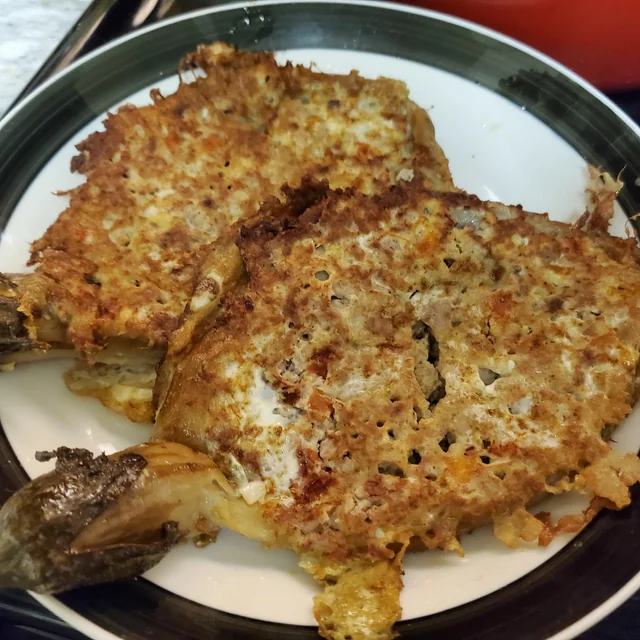





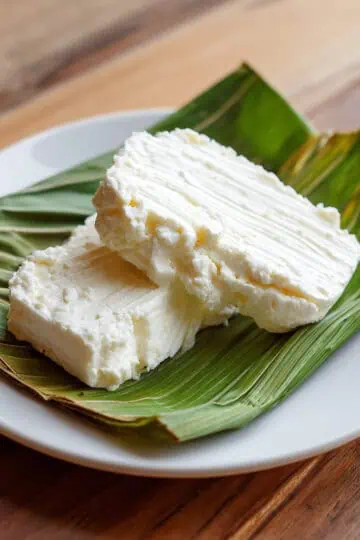
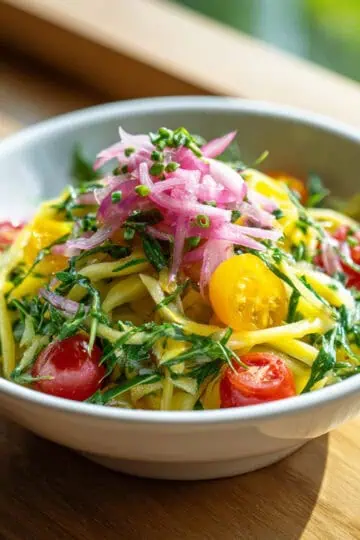
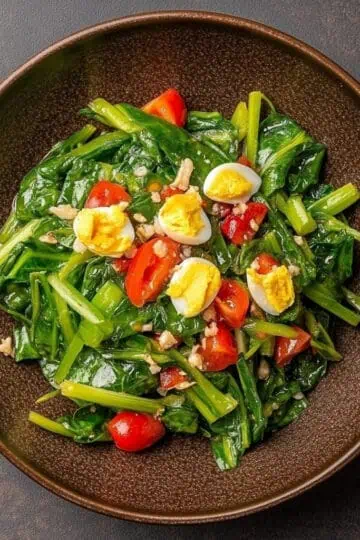

Comments
No Comments